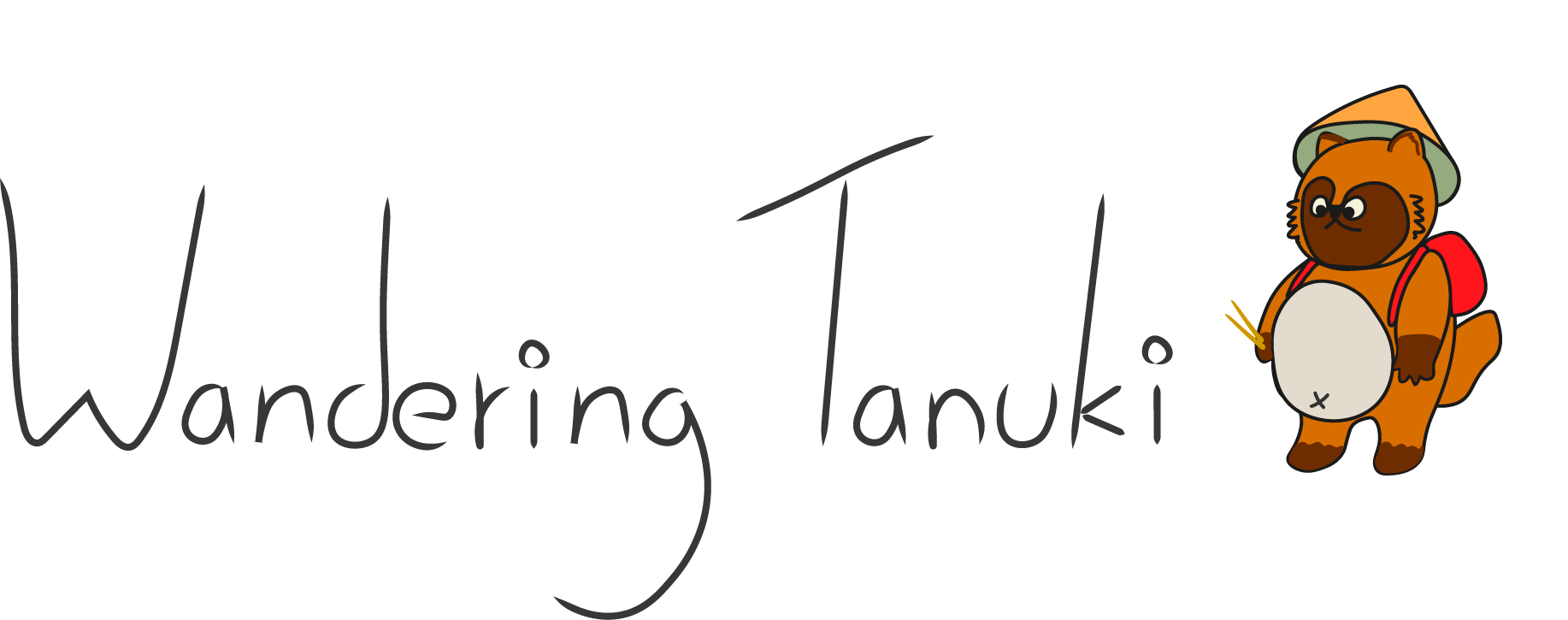What is Romaji?
Have you heard of romaji? Romaji is a system which converts traditional written Japanese into a format using Latin letters. If you’re struggling with learning the Japanese writing system, this can be an easy way to get into Japanese. It is especially useful if you only want to speak and understand the language. However, there can also be downsides to only knowing romaji. Not learning the Japanese writing system like hiragana, katakana, and kanji can make your progress slower in the long run.
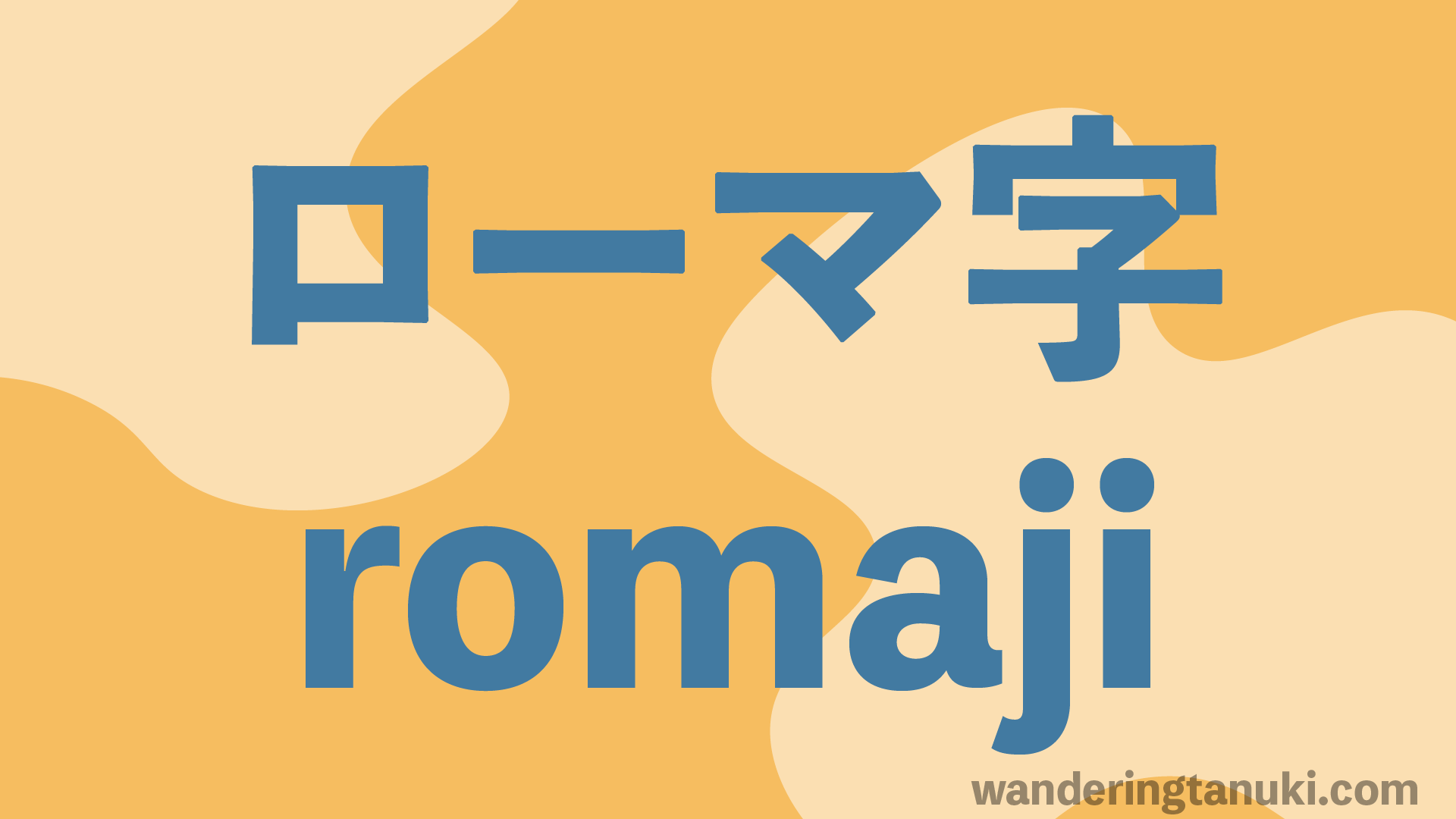
What is Romaji?
Romaji, written ローマ字 in Japanese, is a romanised version of Japanese writing. This directly translates to “roman letters”. The movement toward having a romanised version of Japanese has been around since the 1500’s. Portuguese missionaries used romanised Japanese in order to preach in the native language.
From the 19th century onwards, more organized systems were developed on how to romanise the language. There were even some Japanese people who felt that all writing should switch over to romaji during the Meiji period from 1868 to 1912. In modern day Japan, they teach romaji in public elementary schools but Japanese people write in the traditional Japanese writing systems of kanji, hiragana, and katakana.
Here are some examples of how romaji can look like (there are many types of romaji and we’ll go more in depth later):
ありがとう – arigatou
ローマ字 – romaji
たぬき – tanuki
Types of Romaji:
Romaji comes in several different types or systems. These are attempts at standardising the way that the Japanese writing gets transformed into latin letters. Keep in mind that you’ll see many variations of these types and even a mixture of them in real life.
Here is a romaji chart. If there is no mark, it means that it is used by Hepburn and possibly other romaji systems. If there is a mark, check the key to see which romaji system it belongs in.
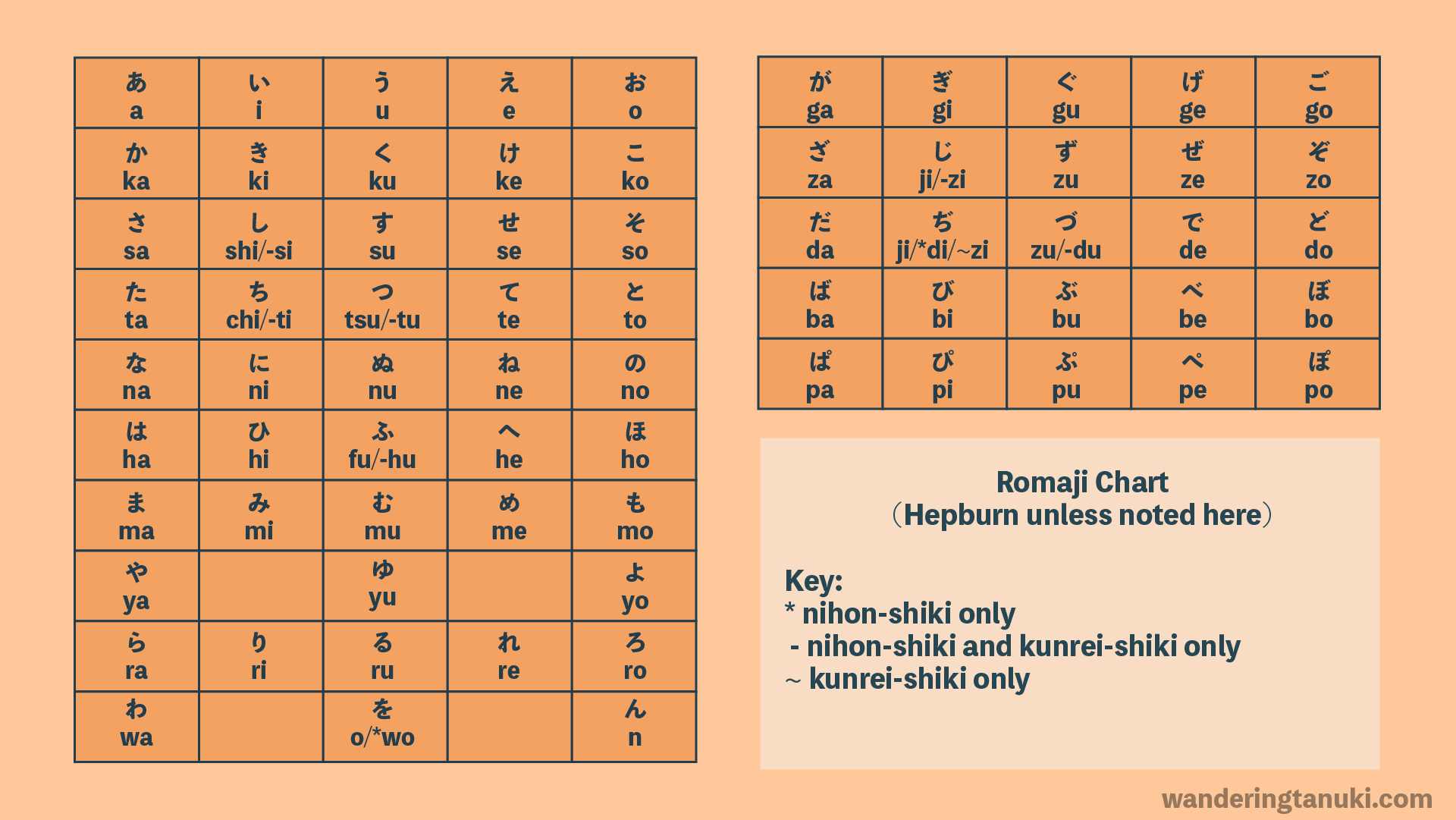
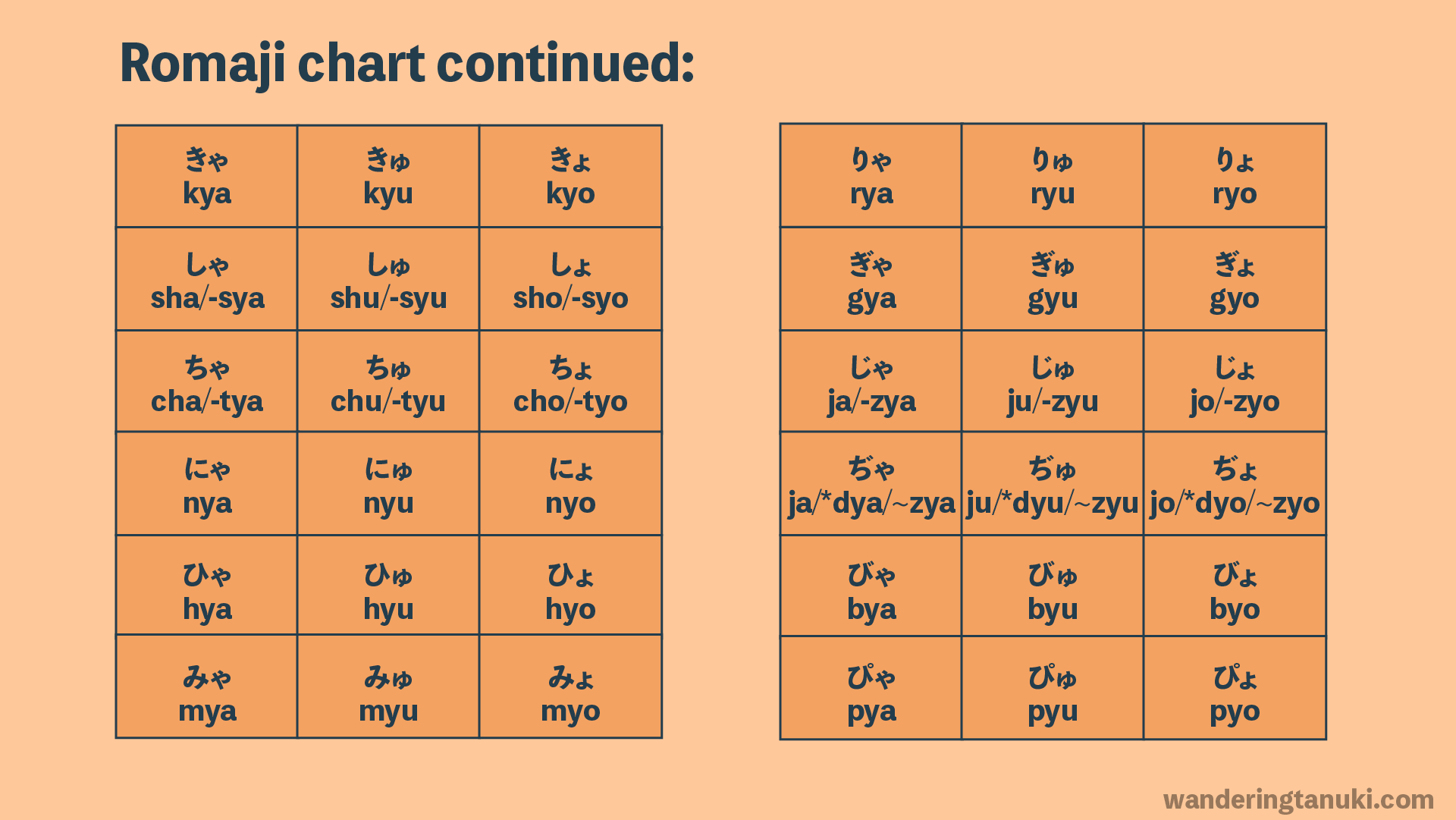
Hepburn romanization
This is an old system that was published in 1867 by James Curtis Hepburn in the first Japanese English Dictionary. Unlike other romanization systems a characteristic of Hepburn is that it uses a natural way of converting Japanese writing into English based on how it’s pronounced. It’s especially apparent when converting sounds like ちゃ ->” Cha” and じゅ -> “Ju”. In other systems, these will use extra letters like “y” which doesn’t sound natural. This system is popular for English speakers because it can be the most intuitive. There is also a revised Hepburn system, which adds a long dash on top to indicate long vowels like tōkyō, and an apostrophe to differentiate confusing syllables like man’in (まんいん), which could be confused with manin (まにん).
Nihon-shiki
This is one of the strictest systems of romanization created in 1885. Each character of hiragana corresponds to unique latin letters. In Japanese, there are some hiragana characters that sound the same but are written differently like じ and ぢ. In Hepburn system they are written the same as ji, but Nihon-shiki differentiates them by assigning “zi” to じ and “di” to ぢ.
Nihon-shiki was initially created to replace the Hepburn system and even the traditional Japanese writing system. It was mainly meant to be used by native Japanese speakers. This is why the pronunciation of Nihon-shiki is not as close to the actual pronunciation of Japanese. For example, じしょwould be zisyo.
Kunrei-shiki
Kunrei-shiki is a system of romanization developed by the government of Japan. It is what is most commonly taught in Japanese schools. However, in daily life and even by the government, most people tend to use the Hepburn system. Kunrei-shiki is a combination of Hepburn and Nihon-shiki and has elements of both. It’s not as strict as Nihon-shiki so it does allow for better pronunciation. For example, じ and ぢ are both written as “zi”.
Wapuro romaji
Wapuro romaji is a combination of all of the systems that is recognized by your computer. The computer automatically changes the Latin letters into Japanese writing. In this form, a characteristic is to show all of the hiragana characters when you’re typing instead of using the macron or circumflex accent for long vowels. For example, you must type koukou to show that う exists, instead of koko. I tend to use this format in this blog to make it easier for me to type out the Japanese into romaji.
Which system of romaji should you learn?
With all of these romaji types, you might be wondering which one to learn. There is no right way, and people even mix different romaji systems.
However, I would recommend sticking with the Hepburn system since it is the most intuitive and most widely used. The computer will also recognise Hepburn system if you try to type with it. As explained before, you do have to add the actual long vowels when typing the romaji into a computer. For example, make sure to type toukyou if you want to write tokyo (東京).
Common Romaji Rules:
Sokuon or Small tsu
Most romaji systems double the consonant when there is a sokuon, or small tsu.
For example:
みっか -> Mikka
さっき -> Sakki
With the Hepburn system, sokuon that appear before ちゃ, like in まっちゃ becomes “Matcha”.
Long vowels
In many cases, romaji systems use symbols to represent long vowels. The Hepburn system uses a macron and in Kunrei-shiki they use a circumflex accent. You can even just write it out how it would sound with the hiragana characters, especially when typing in Japanese.
Here are three romaji versions of 高校 (こうこう):
Kōkō
Kôkô
Koukou
Particles:
Aside from the Nihon-shiki system, which aims to replace hiragana characters with romaji, other systems try to reflect the pronunciation with the romanisation. へ, は, and を have different readings when they act as particles.
Here is how particles work in the Hepburn system:
へ -> e
は -> wa
を -> o (modified Hepburn) / wo (traditional Hepburn)
Benefits of romaji:
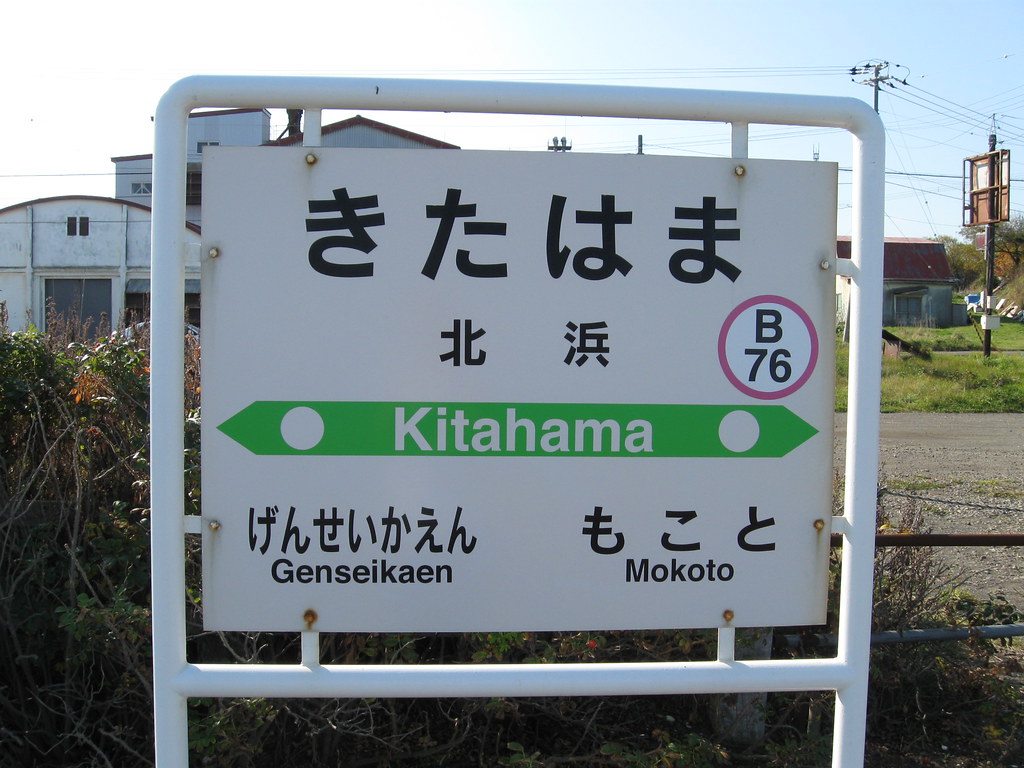
Short term/crash course for travel or business
If you’re learning Japanese for a short term purpose, I think that it is great to learn romaji. You can immediately start saying Japanese words and phrases without having to learn the Japanese writing system. This is useful if you’re going to Japan on a trip and want to write down some useful phrases. It’s also perfect for business travelers who will need to be able to communicate some basic Japanese in a work environment.
Romaji used in Japan
Many signs are in romaji in Japan to make it more friendly for foreigners. If you can understand some romaji, you’ll be able to understand things like location names, food names, and people’s names.
Typing in Japanese
A big benefit for romaji is that you’ll be able to type Japanese characters with a keyboard that only has latin letters. This is great for people who already know how to write the traditional Japanese characters but also need to type it out digitally.
Why Romaji can be bad for Japanese learners:

Bad pronunciation
The main disadvantage to romaji would be that it encourages the use of incorrect pronunciation when reading from romaji. Instead of learning how each individual Japanese hiragana character sounds, it’s easy to try and read the romaji with an English mindset. Also, depending on the romaji system the pronunciation could be completely wrong when read in English like using “si” for し in kunrei-shiki romaji.
Can’t think in Japanese
It is harder to think in Japanese when the language uses latin letters. The best way to learn a language is to detach from your own language and start to process the language as its own thing. Using romaji could make people more likely to try and translate the text to English first.
Limiting and slow learning progress
Finally, if you only learn romaji you’ll eventually hit a limit to your Japanese progress. Most Japanese people use traditional Japanese characters so you won’t be able to read many texts or signs. Even if you only use Japanese for conversation, the Japanese characters can allow you to have a deeper understanding of how words form and work. My advice is that if you have any plans of long term Japanese learning, make sure to learn the traditional Japanese characters starting with hiragana.
I hope that this article can help you understand what is romaji, the benefits, and disadvantages to this system! If you’d like more articles from the Japanese learning blog category be sure to check out How to play Shiritori: A Japanese word game! or 24 Japanese Animal Sounds or Onomatopoeia!
~ Tanuki





